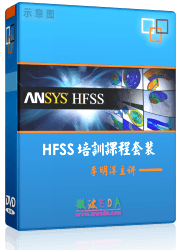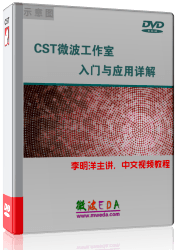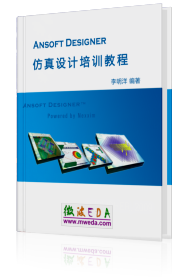Special Solver Parameters - Waveguide
 Solver Solver Start Simulation Start Simulation Specials Specials Waveguide Waveguide
Port settings frame
Specifies special waveguide port settings.
Inhomogeneous
port accuracy enhancement (QTEM modes): Change here the number
of frequency samples for the inhomogeneous port accuracy enhancement.
This feature is activated in the Transient
Solver Parameters dialog and recalculates the S-parameters with consideration
of the broadband frequency behavior of QTEM modes.
Number
of frequency samples: The number of frequency samples used for
the determination of broadband information of inhomogeneous QTEM port
modes.
Consider
dielectric losses: This activates the consideration of lossy
dielectrics in the port region. The losses are represented by the imaginary
part of the permittivity and show a frequency dependence depending on
the chosen dispersion model. The losses can have significant influence
on the calculated port modes. Note that lossy metals are not supported
yet.
Broadband for
inhomogeneous waveguide ports (no QTEM modes): Enables the use
of a broadband port boundary for inhomogeneously filled waveguide ports.
Note that this port operator is designed especially for inhomogeneous
waveguides with no QTEM mode propagation, i.e., with only one conductor
representing the outer shielding of the port. For an inhomogeneous multiconductor
port, please use the accuracy enhancement functionality for QTEM modes.
Number
of frequency samples: The number of frequency samples used for
the broadband waveguide boundary computation.
Generalized
port mode solver: Activate this check button to treat any kind
of waveguide port in a generalized framework. This feature will automatically
analyze the broadband characteristics of each mode and provide a matched
termination at the port plane. Please note that variations of mode fields
over frequency are considered in possible excitation and time signal generation.
Line impedance
adaptation before solver run: Activates the adaptive port meshing
feature to automatically calculate a more accurate line impedance and
mode pattern. For this purpose the port mode solver runs several passes
while adaptively refining the port mesh.
Accuracy:
Represents an accuracy limit for the relative error of the line impedance.
The adaptive port meshing is finished when the line impedance has not
changed more than this value for two following passes or the maximum number
of passes is reached.
Max.
number of passes: Restricts the number of passes in the adaptive
port meshing if the port line impedance takes too long to converge.
Absorb unconsidered
mode fields for inhomogeneous ports: Indicates whether unconsidered
mode fields occurring at the waveguide ports should be absorbed by a Mur
open boundary or not. This functionality is only active for inhomogeneous
ports, where the waveguide operator works less accurately with increasing
distance from the mode calculation frequency. This causes slight field
errors at the port boundary that are then damped by the Mur operator.
Mode calculation
frequency slider: Specifies the frequency that is used for the
waveguide port mode calculation. The factor is set between Fmin
and Fmax relative to the current
frequency range.
This slider helps you to improve accuracy at a certain frequency when
simulating inhomogeneous ports. This is because the time domain waveguide
port operates best at the calculation frequency of the port modes. The
defined frequency value is displayed numerically in the corresponding
text field.
Note that this setting has no effect on broadband
port or full deembedding calculation.
OK
Accepts the input and closes the dialog.
Cancel
Closes this dialog box without performing any
further action.
Help
Shows this help text.
See also
Transient
Solver Parameters, Frequency
range, Signals
in Time Domain Simulations Overview
Special Solver Parameters: Steady
State,
AR-Filter,
Material, Solver,
General




HFSS视频教程
ADS视频教程
CST视频教程
Ansoft Designer 中文教程
|